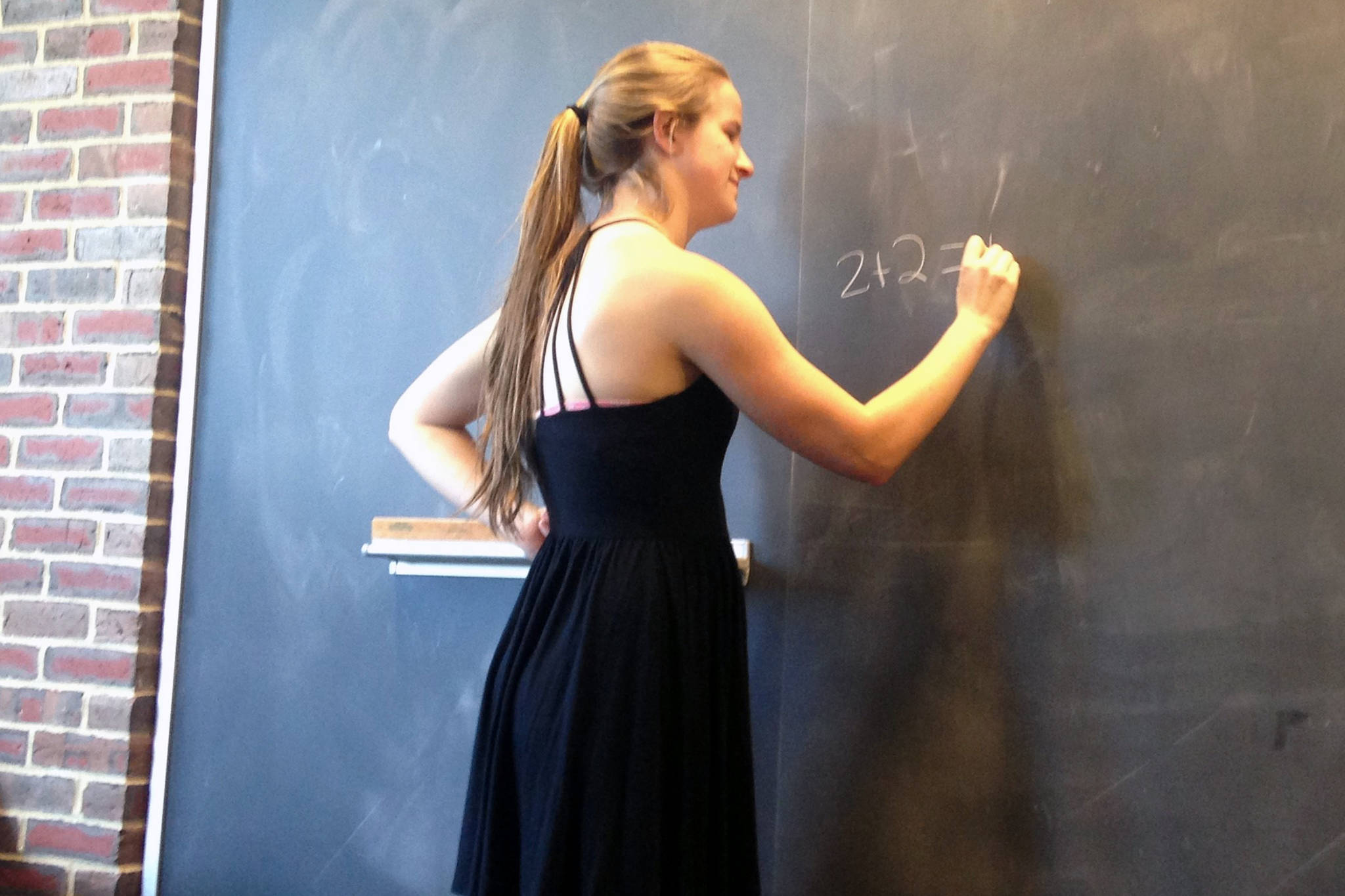This is the first in an occasional series in which we invite Juneau School District graduates to explain how they are incorporating their interest in Science, Technology, Engineering and Math (STEM) fields post-high school. Abigail Taylor-Roth is a 2015 Juneau-Douglas High School graduate, whom we caught up with at the end of summer. Her insights reminded us that there are important real world STEM connections that we can make beyond technological advances in industry and larger data sets. Her unique math and social science background led to a new perspective on important social issues.
Taylor-Roth was a self-described math and science “geek” during her high school years. She took lots of science and math classes and had every intention of continuing that focus in college. Now a senior at Colby College in Maine, Taylor-Roth is majoring in math, but she’s also majoring in WGSS (Women, Gender and Sexuality Studies) and minoring in Computer Science.
STEM Coalition: Tell us what brought you back to Juneau this summer.
I’m always always looking for ways to connect my interests in Math, WGSS, and Computer Science. Hansen Gress, an IT company here in Juneau, offered me an internship where I could use my math analysis, learn lots of (new for me) hands on computer science applications, and do a small, but exciting, research project about technology use at AWARE (Aiding Women in Abuse and Rape Emergencies).
Could you explain more about your research project at AWARE and why you were so excited by it?
Basically, I interviewed AWARE residents about how they do and don’t use technology and why. I was curious to see how technology use affects and is affected by the different backgrounds of the residents at the shelter. It was an amazing opportunity for me to combine traditional STEM and non-STEM disciplines. While this project centered on technology use, and the changes that will be made as a result are directly technological, the project would have been very different without the use of ideas about feminist theory and methodologies that I took from WGSS.
That sounds pretty academic. Could you give some examples?
Sure. For instance, I used ideas of feminist in-depth researching to focus on having a few extended interviews rather than many short ones. I also thought about how feminist theory stresses the importance of acknowledging and taking steps to minimize the power dynamics between the researcher (me) and researched (the residents.) In this project, I came to each of these interviews in a very different position than my interviewees and by being aware of that, I could be a better listener. Over the course of my interviews, it was clear how much each individual’s different background story (their identities) affected their technology use — both positively and negatively.
What do you mean by that?
Depending on their experiences as survivors of domestic or sexual violence, people with substance use disorders, or who are using drugs and alcohol to cope with mental illness, these women often use technology quite differently. For instance, several people talked about how social media helped them with recovery — either as the person describing their own recovery or hearing about others’ recovery. Others talked about their safety and how they had to restrict the data that their devices sent out — by turning off location services, not using social media, or even buying a new phone. Some talked about how these choices then impacted their personal finances or their ability to communicate with others. Those are just a few examples.
Did you come to any type of conclusion?
How about I just read to you from the paper I wrote up:
“From not being able to use purchased devices, to having to purchase new ones; from using technology to explore the recovery process, to refusing to use social media and succeeding even without it, these women are resourceful about how to get what they need from technology. That said, a few more resources could go a long way. Specifically, having a computer for use at the shelter (which is in the process of happening)* and classes about secure technology use would, among other things, greatly benefit those living at AWARE.”
* The computer has since been installed.
Is there anything else you’d like to add about your experience?
Planning and conducting these interviews with minimal outside instruction was new to me and it was an incredible experience to be able to pull together my various interests. I learned a lot from my interviewees — about their lives, about parts of the Juneau community that I never interacted with very much, and about the different barriers they face in using technology. I was able to gather this information and make relevant recommendations directly because in-depth interviews provide a space to learn more about the interviewee than a short survey would. As technology is more and more ubiquitous, it is essential to reflect on how technology affects different lives in different ways. In order to do that, I think that interdisciplinary work is necessary — such as incorporating feminist methodologies. This project also would not have been possible without the support of AWARE, Hansen Gress, and, most importantly, the interviewees.
STEM Activity:
1. Donate your time, money, and/or other resources to AWARE and/or other local social service groups in ways that help them meet their goals. Find out more at https://awareak.org/how-to-help.
2. Do some research about other interdisciplinary works or organizations working to promote inclusion within STEM fields, such as Girls Who Code (https://girlswhocode.com/), Black Girls Code (blackgirlscode.com), Queer Code (queer-code.org)
3. Seek input on projects from people with different backgrounds, expertise and interests than your own.
4. Invest in our local youth. Help them with the resources, advice, and space to learn and innovate.
Rebecca Soza and Brenda Taylor are Juneau STEM Coalition co-chairs. STEM Corner is a monthly column about Science, Technology, Engineering and Math in Juneau, written by a rotating group of Juneau STEM Coalition members.

